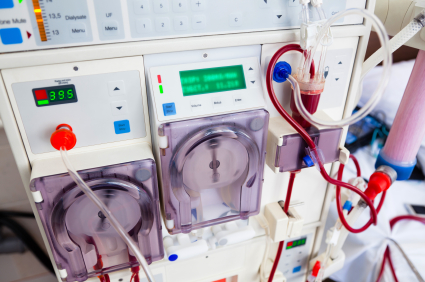Struggle against Polycystic Kidney Disease – part 1
My mother and her struggle against Polycystic Kidney Disease
Hello everybody. I want to say thanks to Herbert, a friend of mine, that today will be our guest blogger.
This is a post about his mother, who suffered from Polycystic Kidney Disease.
The Life of My Mother
It was back in my college days when my mother started facing problems with her appetite. She started developing a dislike for most kinds of food.
It was very rare that we used to go out to eat. But, whenever we did it used to lead her to heavy vomiting for hours. Even then we thought those were nothing but symptoms of hyper-acidity. So, she went on taking antacids which used to give her relief for the time beings.
But, these kind of problems started becoming more and more frequent. She simply started avoiding eating from fast foods and restaurants as per the suggestions of local physicians. However, this problem got sorted out and nothing happened for about a year.
The challenges my mother faced when she got diagnosed with Polycystic Kidney Disease

After some time, she started suffering from acidity again every now and then. These acidity problems would often lead to heavy vomiting and sleepless nights. When this problem became even more frequent, we decided to consult a specialized doctor.
The doctor asked her if she had noticed certain other symptoms, like frequent muscle cramps which lasted for longer period of time.
She also had symptoms like incomplete sleep or sleepless nights. She also started to feel quite weak and would get tired very easily. She was also feeling quite sick more and more often. She never had high blood pressure in her life. But, it was during that time she had developed high blood pressure.
The doctor suggested my mother to go through a number tests including kidney and blood tests. There were two tests that were suggested. Albuminuria-to-creatinine ratio (ACR) and Glomerular filtration rate (GFR).
- Albuminuria-to-creatinine ratio:
Albuminuria takes place when a high amount of albumin which is a type of protein is found in the urine. Albuminuria-to-creatinine ratio is said to be one of the most trusted way of testing albuminuria which helps to determine kidney damage. - Glomerular filtration rate:
It is a creatinine test which is based on blood. It works as an indicator to tell us how well kidney is functioning in order to eliminate wastes from blood. Factors that are used to calculate GFR are the serum creatinine, age of the person and gender. GFR may come below 60 which is normal yet one might have kidney disease. GFR might not be proved to be an effective test for identifying the disease in early stages.
It was after these couple of tests she was recommended to have a few more tests. She was eventually diagnosed with Autosomal Dominant Polycystic Kidney Disease.
My grandmother had this disease and the doctor said my mother had also inherited the genes of this disease from her.

The doctor told us that her disease was not in its early stage.
Today, I’m still wondering if things could have gone in a different way, if we discovered this disease in his early stages, and treated it accordingly.
However, the doctor suggested us a few treatment plans…
Keep on reading: part 2








